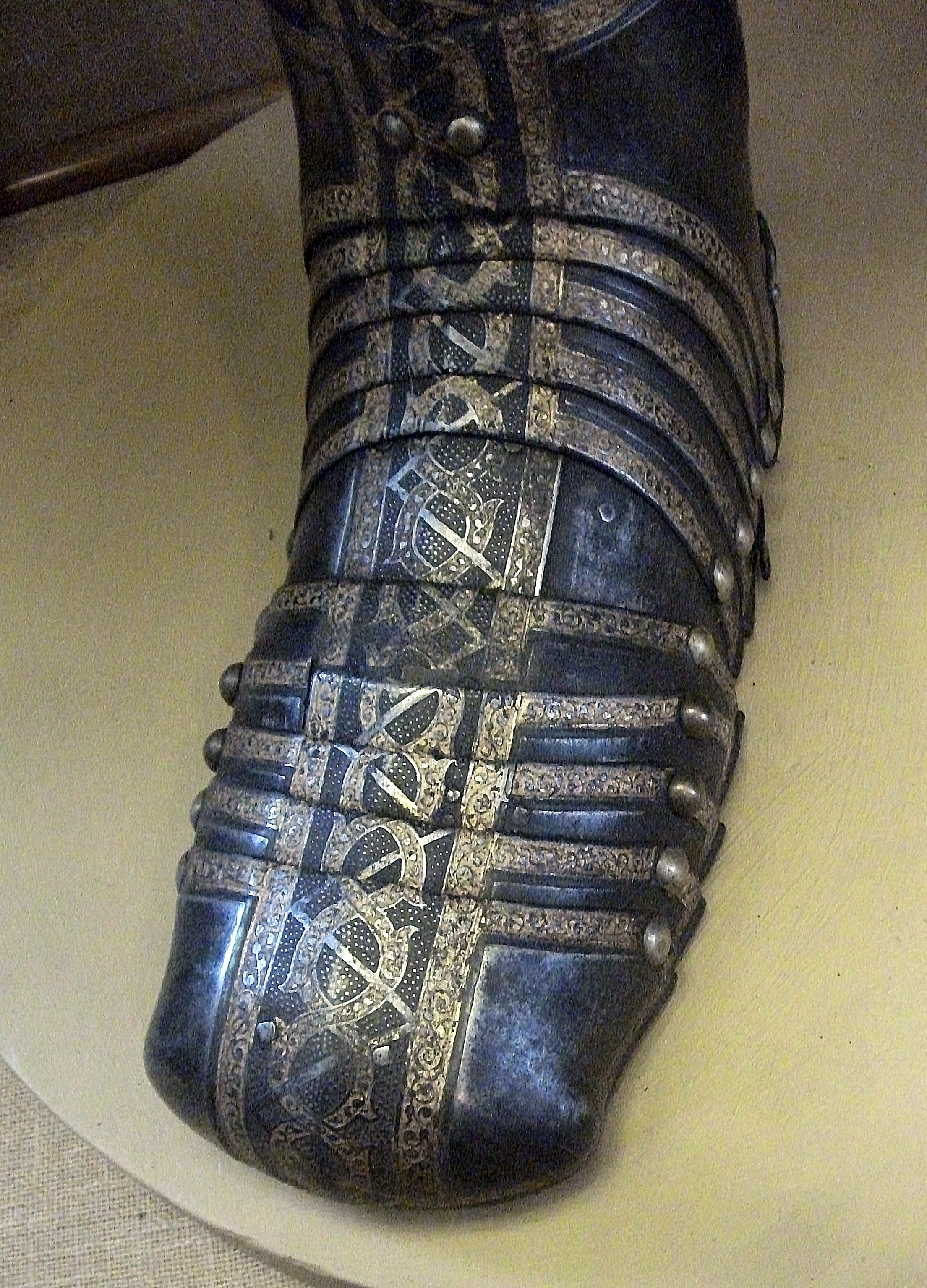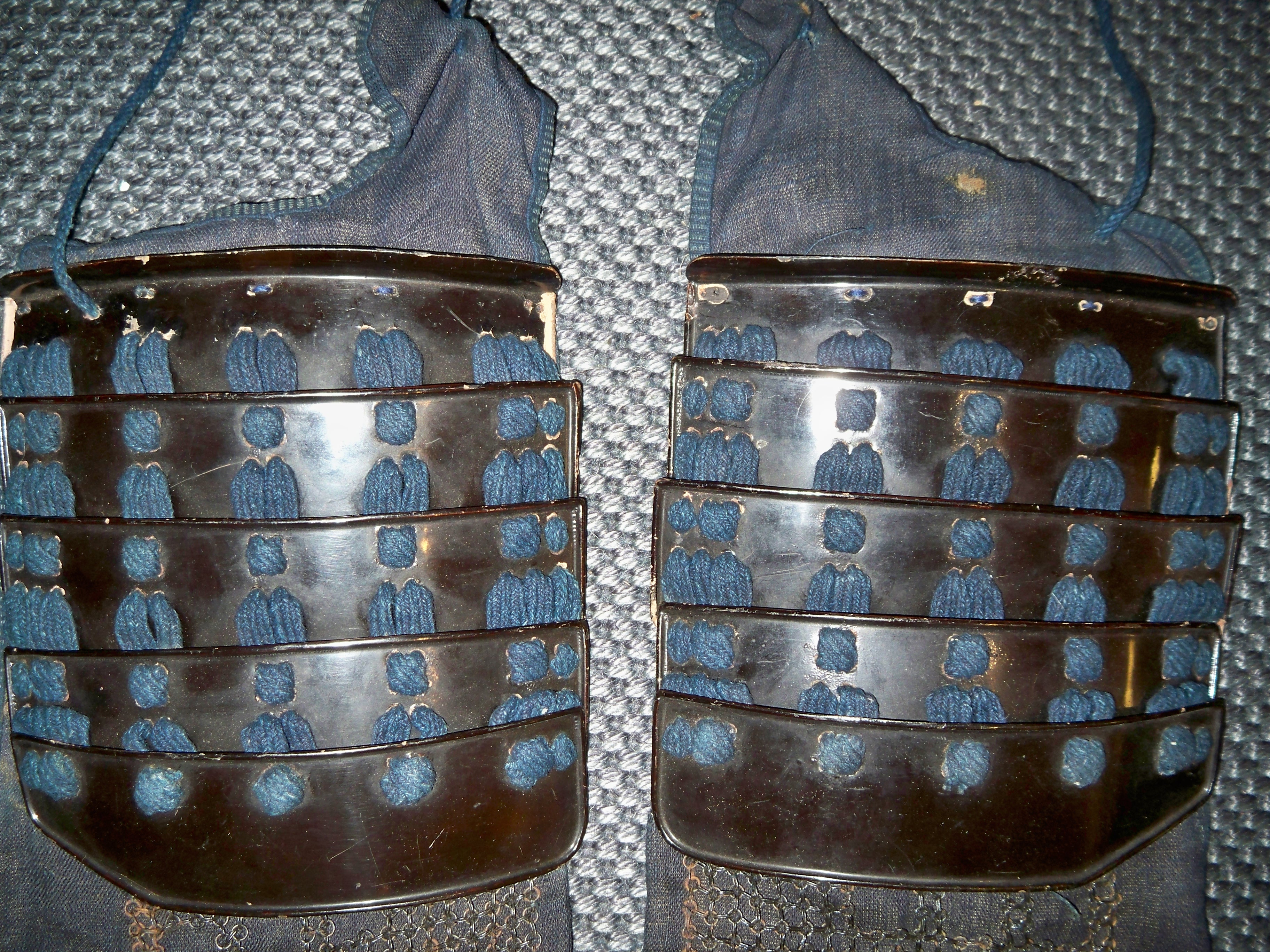Lame (armor) on:
[Wikipedia]
[Google]
[Amazon]

 A lame is a solid piece of
A lame is a solid piece of
sheet metal
Sheet metal is metal formed into thin, flat pieces, usually by an industrial process. Sheet metal is one of the fundamental forms used in metalworking, and it can be cut and bent into a variety of shapes.
Thicknesses can vary significantly; ex ...
used as a component of a larger section of plate armor
Plate armour is a historical type of personal body armour made from bronze, iron, or steel plates, culminating in the iconic suit of armour entirely encasing the wearer. Full plate steel armour developed in Europe during the Late Middle Ages, ...
used in Europe during the medieval period. It is used in armors to provide articulations or the joining of the armor elements. The size is usually small with a narrow and rectangular shape. Multiple lames are rivet
A rivet is a permanent mechanical fastener. Before being installed, a rivet consists of a smooth cylindrical shaft with a head on one end. The end opposite to the head is called the ''tail''. On installation, the rivet is placed in a punched ...
ed together or connected by leather
Leather is a strong, flexible and durable material obtained from the tanning, or chemical treatment, of animal skins and hides to prevent decay. The most common leathers come from cattle, sheep, goats, equine animals, buffalo, pigs and hog ...
straps or cloth lacing to form an articulated piece of armor that provides flexible protection. The armor worn by the samurai
were the hereditary military nobility and officer caste of medieval and early-modern Japan from the late 12th century until their abolition in 1876. They were the well-paid retainers of the '' daimyo'' (the great feudal landholders). They ...
class of feudal Japan
Japan ( ja, 日本, or , and formally , ''Nihonkoku'') is an island country in East Asia. It is situated in the northwest Pacific Ocean, and is bordered on the west by the Sea of Japan, while extending from the Sea of Okhotsk in the n ...
used ''lames'' in the construction of many of their individual armor parts. The Japanese term is ''ita'', which can both refer to the lame or its borderings.
Examples
The Dos Aguas armor produced inValencia, Spain
Valencia ( va, València) is the capital of the autonomous community of Valencia and the third-most populated municipality in Spain, with 791,413 inhabitants. It is also the capital of the province of the same name. The wider urban area al ...
, is an example of a plate armor made of lames. The tassets are composed of three lames, with the inner edge of each turned out at right angles. The design provided the armor strength due to the continuous arch-shaped flange. The Schott-Sonnenberg style produced in Nuremberg
Nuremberg ( ; german: link=no, Nürnberg ; in the local East Franconian dialect: ''Nämberch'' ) is the second-largest city of the German state of Bavaria after its capital Munich, and its 518,370 (2019) inhabitants make it the 14th-largest ...
also featured a three-lame skirt. The tassets are also composed of lames riveted to the lower lame of the fauld.
See also
*Lamellar armour
Lamellar armour is a type of body armour, made from small rectangular plates (scales or ''lamellae'') of iron or steel, leather ( rawhide), or bronze laced into horizontal rows. Lamellar armour was used over a wide range of time periods in Centr ...
* Laminar armour
*Scale armour
Scale armour (or scale mail) is an early form of armour consisting of many individual small armour scales (plates) of various shapes attached to each other and to a backing of cloth or leather in overlapping rows.Plate armour
Plate armour is a historical type of personal body armour made from bronze, iron, or steel plates, culminating in the iconic suit of armour entirely encasing the wearer. Full plate steel armour developed in Europe during the Late Middle Ages, ...
Western plate armour
Samurai armour
{{medieval-armour-stub